Chhattisgarh Switch to Hindi
Viksit Chhattisgarh: A Vision For 10 Years
Why in News?
The Chhattisgarh government organised a two-day ‘Chintan Shivir’ (ideation camp) at IIM-Raipur to discuss and strategise plans for the state’s development.
- Sessions during the camp were conducted by the NITI Aayog CEO B V R Subrahmanyam as well as by G20 Sherpa Amitabh Kant.
Key Points
- The camp, aimed at designing and implementing a strategic roadmap for the vision of a ‘Viksit Chhattisgarh’, also featured subject matter experts from across the nation.
- Viksit Chhattisgarh is in alignment with the idea of ‘Viksit Bharat’, the goal of developing India by 2047.
- During the camp, the abundance of minerals in Chhattisgarh and the scenic landscapes in the state were highlighted.
- Importance of balanced mineral exploitation to benefit the state's economic interests and the development of the tourism industry in the state was also emphasized.
Niti Aayog
- The Planning Commission was replaced by a new institution – NITI Aayog on 1st January, 2015 with emphasis on ‘Bottom –Up’ approach to envisage the vision of Maximum Governance, Minimum Government, echoing the spirit of ‘Cooperative Federalism’.
- It has two hubs:
- Team India Hub acts as an interface between States and Centre.
- Knowledge and Innovation Hub builds the think-tank acumen of NITI Aayog.
Note:
- The G20 has no permanent secretariat. The agenda and work are coordinated by representatives of the G20 countries, known as ‘Sherpas’, who work together with the finance ministers and governors of the central banks.


Haryana Switch to Hindi
Socio-economic Criteria in Govt Jobs is Unconstitutional
Why in News?
Recently, the Punjab and Haryana High Court declared the socioeconomic criteria set by the Haryana government for granting additional marks to certain classes of candidates in state government jobs as unconstitutional and set it aside.
- The court ruled that this criteria violated Articles 14, 15, and 16 of the Indian Constitution.
Key Points
- The Haryana government had introduced the socio-economic criteria to provide additional marks to certain classes of candidates, including those without family members in government jobs, state-domiciled candidates, and those with family incomes not exceeding Rs 1.80 lakh per annum.
- Petitioners argued that:
- The criteria further discriminates based on domicile and descent, which are prohibited markers under Article 162 of the Constitution.
- The petitioner argues that there is no rationale for granting additional marks to a certain class when reservations for EWS, Scheduled Castes (SC), and Backward Classes (BC) are already provided for.
Note:
- Article 14: No person shall be denied treatment of equality before the law or the equal protection of the laws within the territory of India.
- Article 15: No citizen shall be discriminated on grounds only of religion, race, caste, sex or place of birth.
- Article 16: Provides for equality of opportunity for all citizens in matters of employment or appointment to any public office.


Rajasthan Switch to Hindi
Fennel Production in Rajasthan
Why in News?
Following a three-year-long study, four desert districts in Rajasthan, where farmers depend on saline water for irrigation, are set to emerge as hubs of fennel production.
- The study was conducted in Bikaner, Nagaur, Churu, and Barmer districts
Key Points
- Taxonomically classified as Foeniculum vulgare, fennel is a hardy, perennial herb with yellow flowers and feathery leaves.
- Rajasthan and Gujarat are the leading fennel-producing States in India, contributing about 96% of the total production.
- In Rajasthan, the highest amount of fennel is cultivated in Nagaur district, covering 10,000 hectares. Its cultivation also takes place in Sirohi, Jodhpur, Jalore, Bharatpur, and Sawai Madhopur districts.
- The trials measured the yield and tested salt tolerance of the different fennel varieties and found encouraging results.
- The fennel variety, RF-290, was found to be viable for irrigation with saline water.
- Drip irrigation with saline water could expand the area under fennel production and increase productivity to make agriculture remunerative for farmers cultivating the spice.
- According to the study, the experimental irrigation led to the production of about nine quintals of fennel per hectare and good production of fennel can also be obtained in areas where farming is done through tube wells.


Uttar Pradesh Switch to Hindi
Food Irradiation
Why in News?
The government of India plans to use radiation processing (Food Irradiation) to extend the shelf life of a 100,000 tonne onion buffer stock in 2024, aiming to prevent shortages and price hikes.
- India, a major onion exporter, is facing a 16% decline in onion output for the 2023-24 season, bringing production down to an estimated 25.47 million tonnes.
Key Points
- Food irradiation is the process of exposing food and food products to ionising radiation, such as gamma rays, electron beams, or X-rays.
- In India, irradiated food is regulated in accordance with the Atomic Energy (Control of Irradiation of Food) Rules, 1996.
- Significance:
- It is used in food processing to help ensure food safety.
- Seasonal overstocking and long transport times lead to food waste.
- India's hot, humid climate is a breeding ground for spoilage-causing insects and microbes.
- Seafood, meat, and poultry can harbour harmful bacteria and parasites that make people sick.
Onion Production in India
- India is the second-largest (after China) onion-growing country in the world, famous for its pungent onions available year-round.
- Major Onion Producing States:
- Maharashtra, Karnataka, Orissa, Uttar Pradesh, Gujarat, Andhra Pradesh, and Tamil Nadu are the major onion-producing states.
- Maharashtra ranks first in Onion production with a share of 42.53% followed by Madhya Pradesh with a share of 15.16% in 2021-22 (3rd Advance Estimate).
- Export Destination: Major export destinations of Indian onion include Bangladesh, Malaysia, the United Arab Emirates, Sri Lanka and Nepal.


Uttar Pradesh Switch to Hindi
India to Import Wheat After 6 years
Why in News?
India, the world's second-largest wheat producer, plans to begin wheat imports after a six-year gap to replenish depleted reserves and control rising prices, driven by three consecutive years of disappointing crops.
Key Points
- India's wheat production has declined in the last 3 years due to unfavourable weather conditions, leading to a sharp drop in wheat output.
- The government estimates this year's wheat crop to be 6.25% lower than the previous year's (2023) record production of 112 million metric tons.
- The government's target for wheat procurement the year 2024 was 30-32 million metric tons, but it has managed to buy only 26.2 million tons so far.
- Domestic wheat prices have stayed above the government's minimum support price (MSP) of 2,275 rupees per 100 kg and have been on the rise recently.
- So, the government decided to remove the 40% import duty on wheat to allow private traders and flour millers to import wheat, primarily from Russia.
Wheat
- This is the second most important cereal crop in India after rice and main food crop, in the north and north-western part of the country.
- Wheat is a rabi crop that requires a cool growing season and bright sunshine at the time of ripening.
- Success of the Green Revolution contributed to the growth of Rabi crops, especially wheat.
- Top 3 Wheat Producers in World (2021): China, India and Russia.
- Top 3 Wheat Producers in India (in 2021-22): Uttar Pradesh, Madhya Pradesh and Punjab
- Government Initiatives:
- Macro Management Mode of Agriculture, National Food Security Mission and Rashtriya Krishi Vikas Yojana etc.






%20MPPCS%202025%20Desktop%20E.jpg)
%20MPPCS%202025%20Mobile%20E%20(1).jpg)

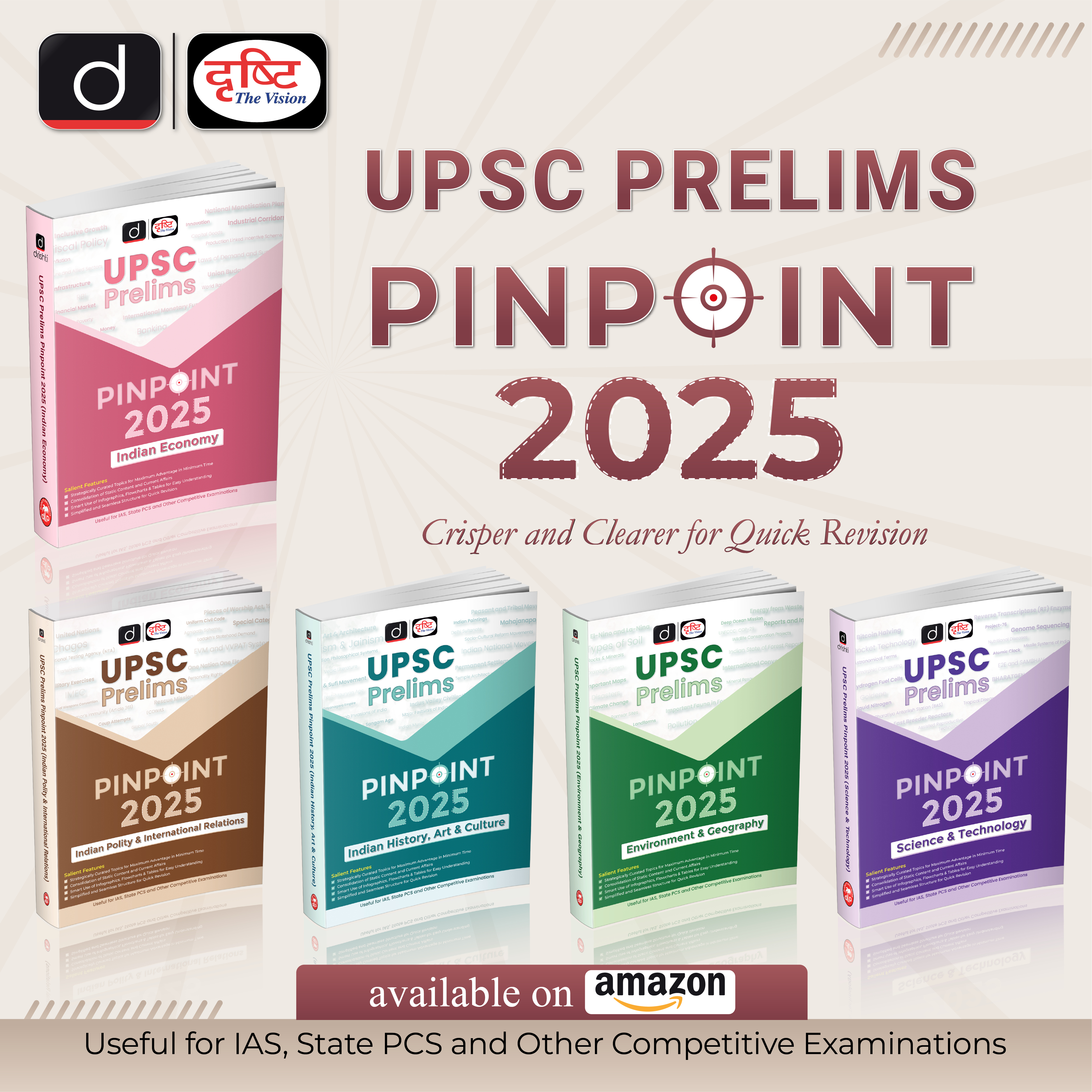








.png)
.png)





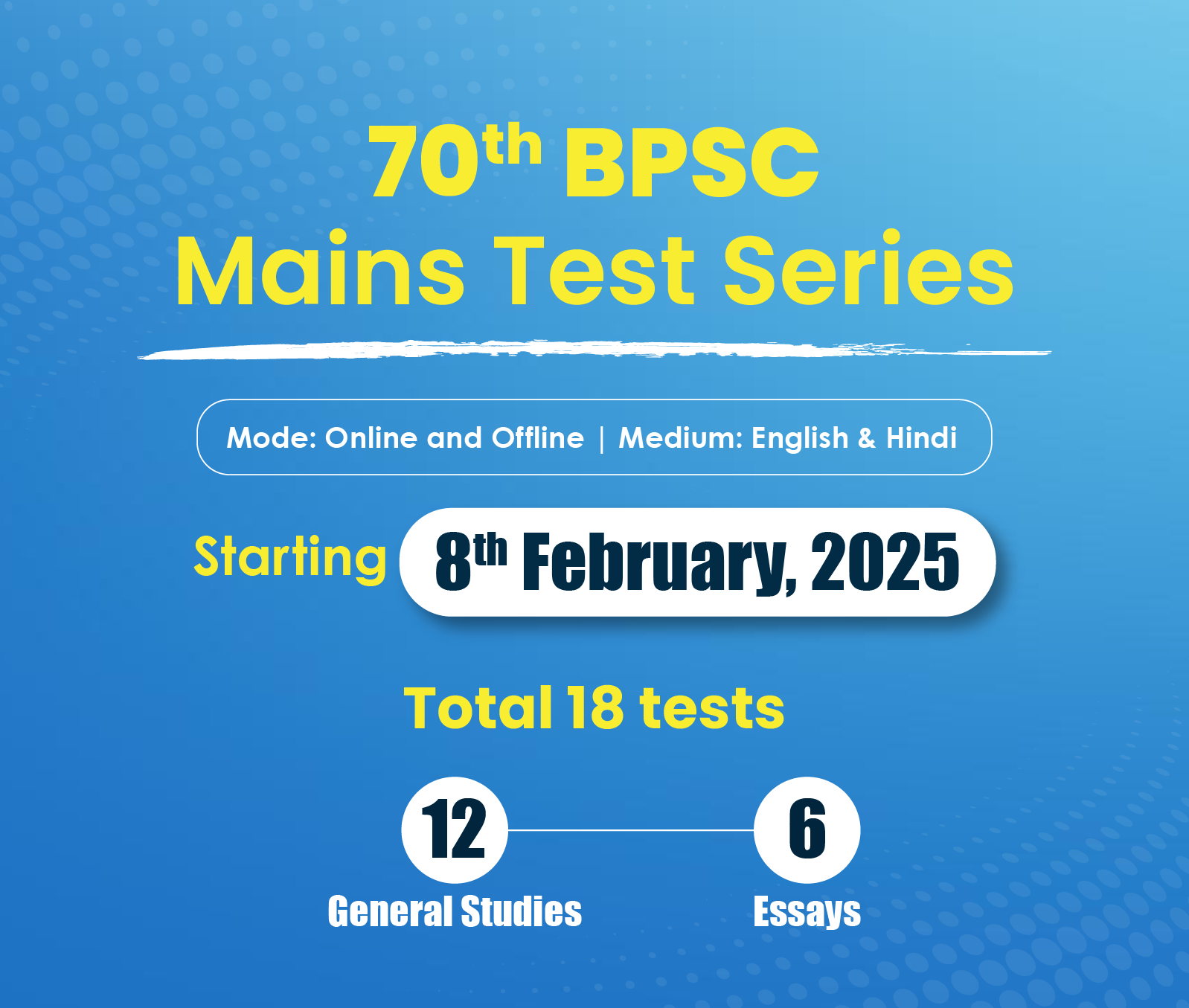





 PCS Parikshan
PCS Parikshan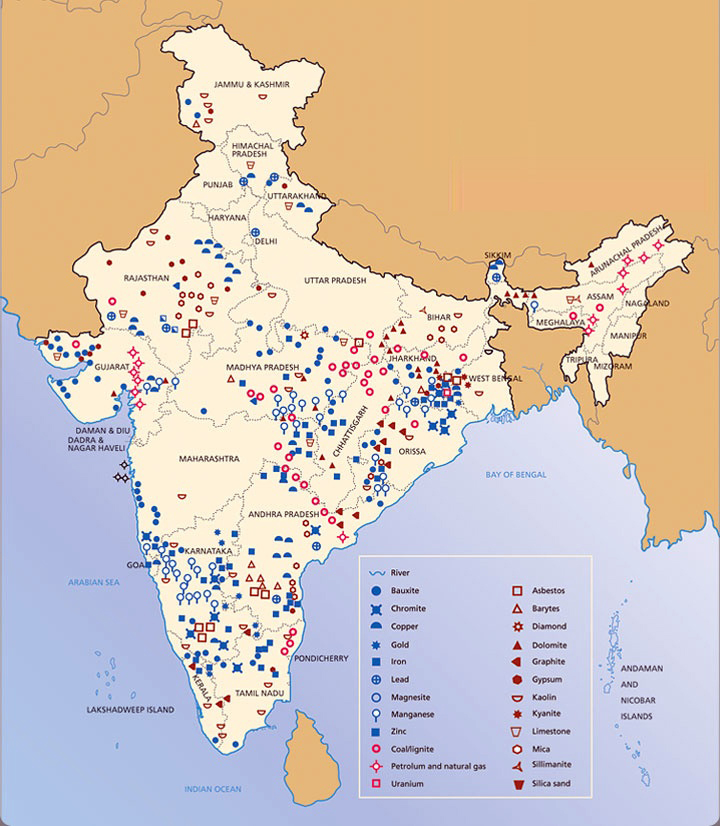
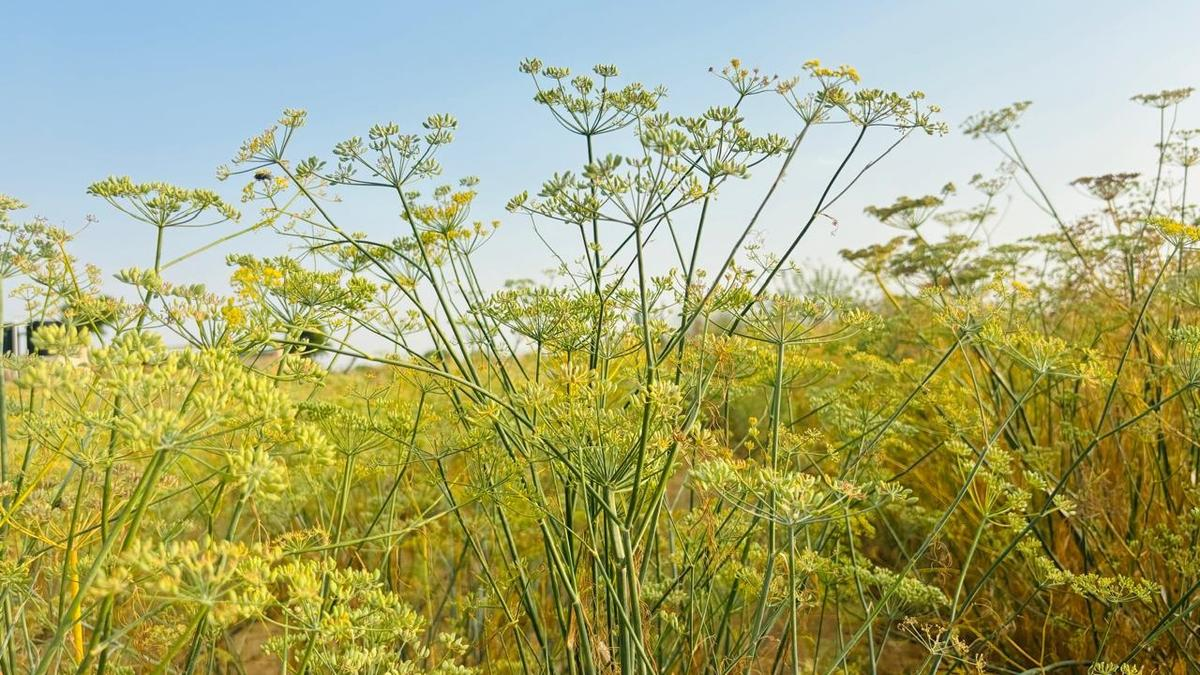
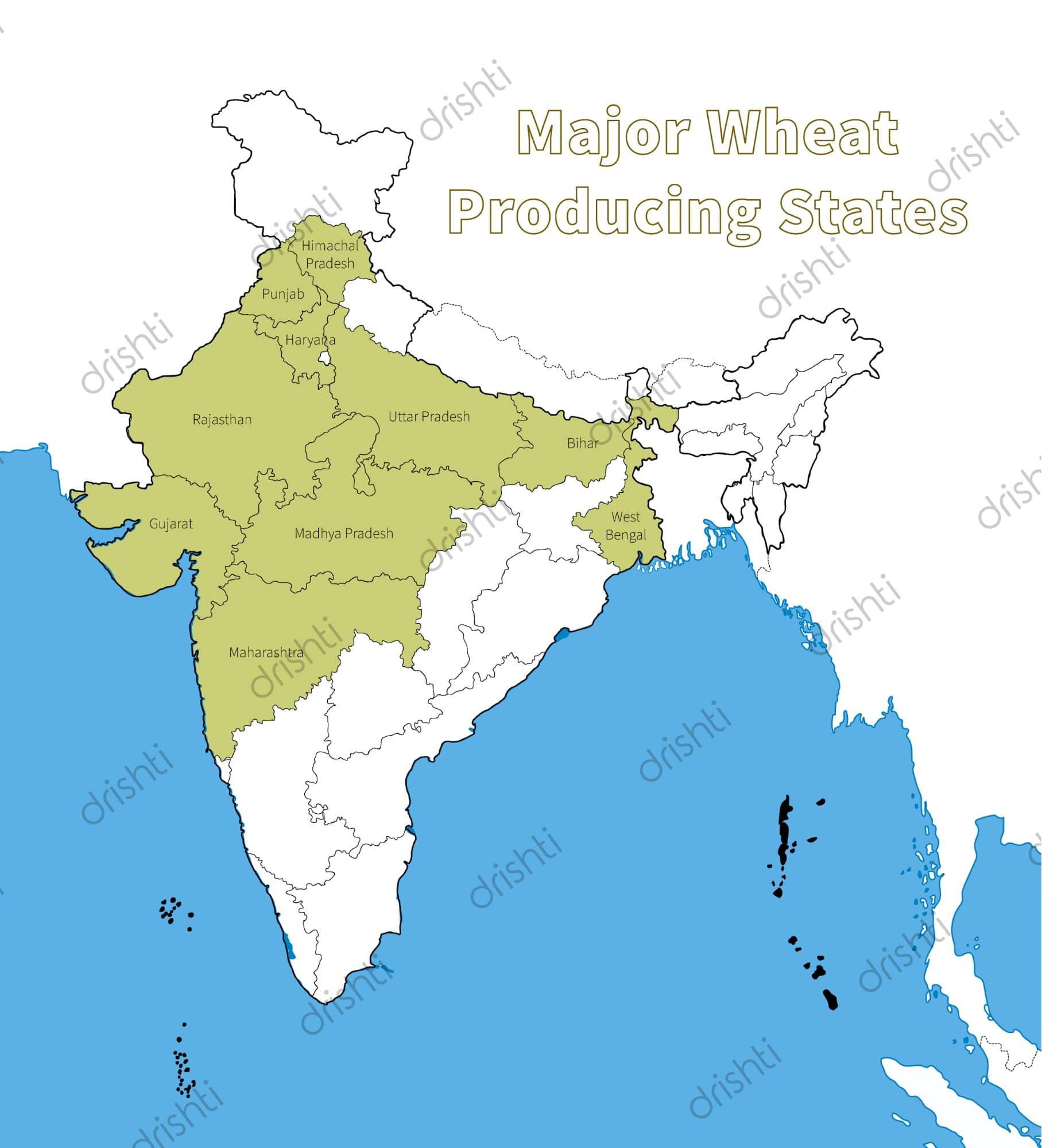



-min.jpg)